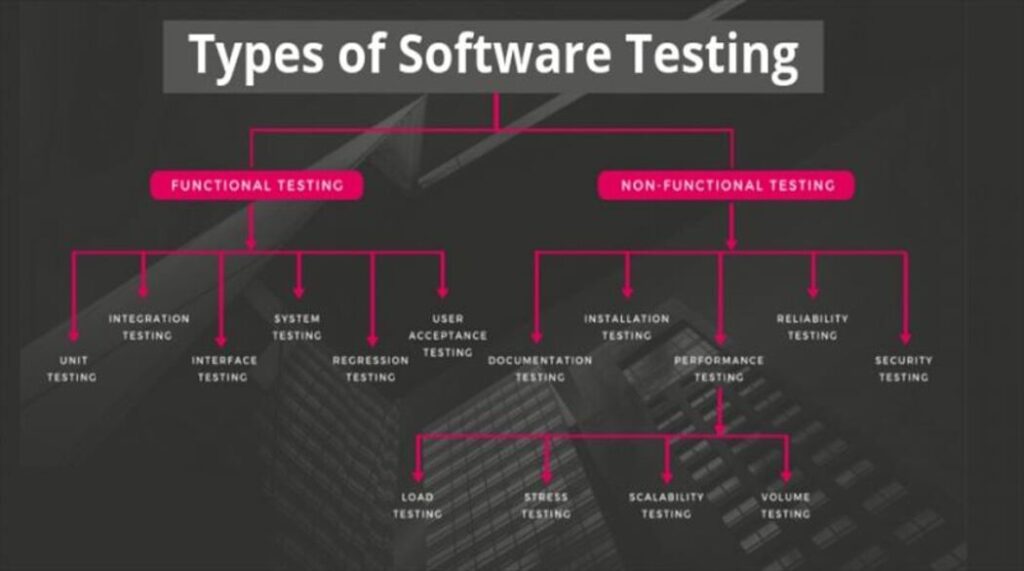Software Testing Strategies: Ensuring Quality and Efficiency

Software Testing Strategies In the fast-paced world of software development, ensuring the quality and efficiency of software products is paramount. Software testing strategies play a crucial role in achieving this objective. Developing teams can identify defects early by implementing comprehensive testing methods, enhance user satisfaction, and deliver robust software solutions. This article delves into various software testing strategies, thoroughly exploring their importance, methodologies, and best practices.
1. The Importance of Software Testing Strategies
Effective software testing strategies are essential for several reasons:
- Quality Assurance: Software Testing Strategies ensure that the software meets the required standards and functions as expected.
- Cost Efficiency: Early detection of defects reduces the cost of fixing them.
- User Satisfaction: High-quality software leads to a better user experience and satisfaction.
- Risk Mitigation: Identifying and addressing potential issues reduces the risk of software failure.
2. Types of Software Testing Strategies

2.1. Manual Testing
When testing manually, test cases are carried out by human testers without the aid of automated technologies. It is essential for ad hoc, exploratory, and usability testing.
Advantages:
- Flexibility to adapt to changes.
- Effective for finding user interface issues.
Disadvantages:
- Time-consuming and prone to human error.
- Less efficient for repetitive tasks.
2.2. Automated Software Testing Strategies
Scripts and other tools are used in automated testing to carry out test cases. Regression, load, and performance testing are all excellent uses for it.
Advantages:
- Faster execution and repeatability.
- Reduces human error.
Disadvantages:
- Initial setup can be time-consuming.
- Requires maintenance of test scripts.
2.3. Functional Software Testing Strategies
Functional testing ensures that the Software Testing Strategies function as expected according to the requirements. It includes:
- Unit Testing: Testing individual components.
- Testing: the way components interact is known as integration testing.
- System Testing: Testing the complete system.
- Acceptance Testing: confirming that the system satisfies user needs.
2.4. Non-Functional Testing
Non-functional testing focuses on performance, security, usability, and other non-functional aspects.
- Performance Testing: Assessing speed, responsiveness, and stability.
- Security Testing: Identifying vulnerabilities.
- Usability Testing: Ensuring the Software Testing Strategies is user-friendly.
- Compatibility Testing: Verifying the software works across different environments.
3. Best Practices in Software Testing

3.1. Early and Continuous Testing
Incorporating testing early in the development process and conducting it continuously ensures defects are detected and fixed promptly.
3.2. Comprehensive Test Coverage
Ensuring that all aspects of the software are tested, including functional and non-functional requirements, is crucial for delivering a high-quality product.
3.3. Test Automation
Implementing test automation for repetitive and regression testing tasks increases efficiency and reliability.
3.4. Agile and Davos Integration
Integrating testing within Agile and Davos methodologies promotes a culture of continuous testing and improvement, enabling faster delivery of high-quality software.
3.5. Risk-BasedSoftware Testing Strategies
Prioritizing testing efforts based on the risk and impact of potential defects ensures that critical areas are tested more thoroughly.
4. Tools and Technologies in Software Testing Strategies

4.1. Test Management Tools
Tools like JIRA and Test Rail help manage test cases, track defects, and generate reports, ensuring a structured testing process.
4.2. Automation Tools Software Testing Strategies
Popular automation tools include Selenium, QTP, and Opium. Automated test script creation and execution are made easier by these tools.
4.3. Performance Testing Tools
Meter and Load Runner are widely used for performance testing, helping assess the application’s behavior under load.
4.4. Security Software Testing Strategies Tools
Tools such as OWASP ZAP and Burp Suite are essential for identifying and mitigating security vulnerabilities.
5. Challenges in Software Testing Strategies

5.1. Test Environment Management
Setting up and maintaining a consistent test Software Testing Strategies environment can be challenging and time-consuming.
5.2. Test Data Management
Generating and managing test data that accurately represents real-world scenarios is crucial for effective testing.
5.3. Keeping Up with Technological Advancements
The rapid pace of technological advancements requires continuous learning and adaptation of new tools and techniques.
5.4. Balancing Manual and Automated Testing
Finding the right balance between manual and automated testing is essential for maximizing efficiency and coverage.
6. Future Trends in Software Testing

6.1. AI and Machine Learning
The integration of AI and Machine Learning in testing tools is revolutionizing the software testing landscape, enabling predictive analytics and smarter test case generation.
6.2. Iota Testing
With the rise of the Internet of Things (Iota), testing strategies are evolving to address the unique challenges of Iota ecosystems, such as interoperability and security.
6.3. DevTestOps Software Testing Strategies
The convergence of development, testing, and operations (DevTestOps) promotes seamless integration of testing into the continuous delivery pipeline, enhancing collaboration and efficiency.
6.4. Test Automation in CI/CD
The adoption of test automation within Continuous Integration/Continuous Delivery (CI/CD) pipelines is becoming a standard practice, ensuring rapid and reliable software releases.
Conclusion
Effective software testing strategies are integral to the success of any software development project. By employing a combination of manual and automated testing, leveraging the right tools, and adhering to best practices, development teams can deliver high-quality software that meets user expectations and stands the test of time.
Click Here: Affiliate Marketing




